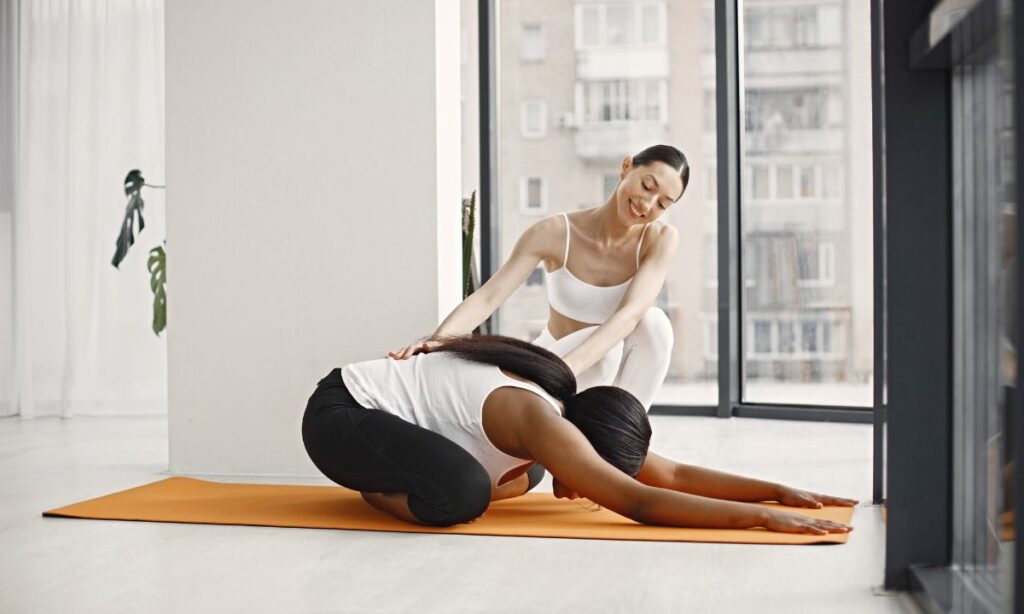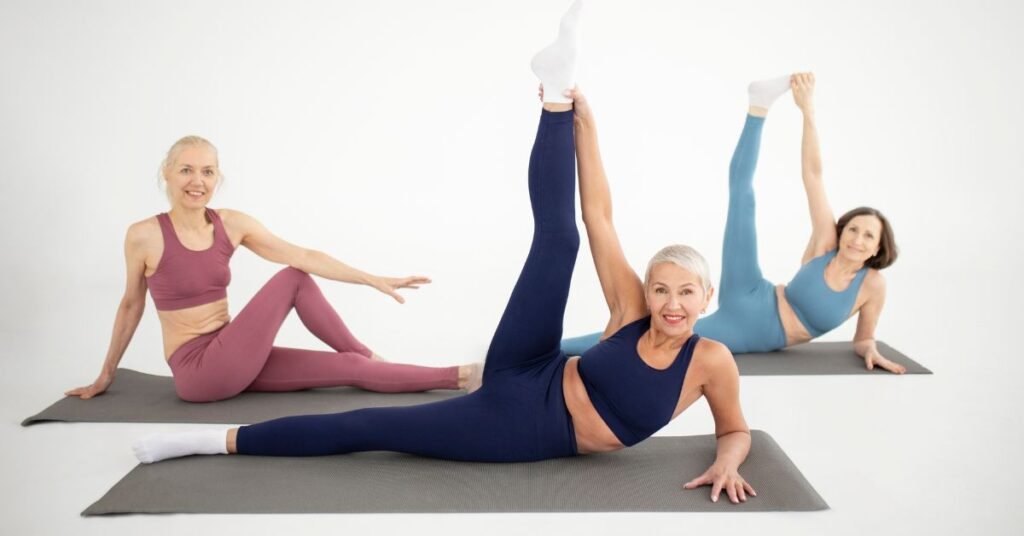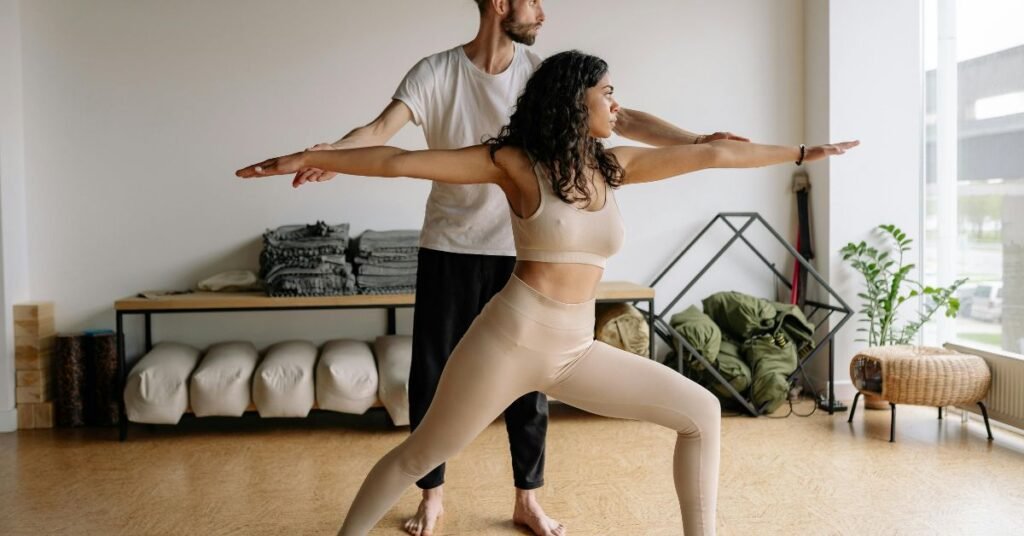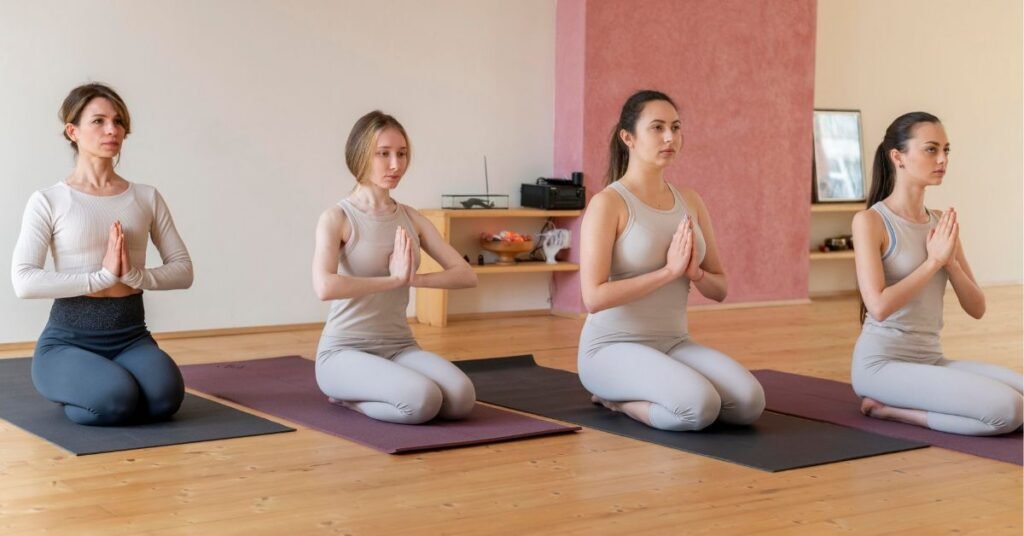Introduction
Yoga is more than just a physical practice—it’s a way to balance the mind, body, and spirit. According to Ayurveda, an ancient system of natural healing from India, each person has a unique mind-body constitution called a dosha. There are three doshas—Vata, Pitta, and Kapha—and understanding your dosha can help you choose the best yoga poses to restore balance and harmony.
In this guide, we’ll explore the best yoga poses for each dosha type so you can personalize your practice for maximum benefits. Whether you feel restless and anxious (Vata), overheated and stressed (Pitta), or sluggish and unmotivated (Kapha), we’ve got the perfect yoga routine to bring you back into balance.
Understanding Your Dosha Type
Before diving into the best yoga poses for your dosha, let’s do a quick overview of each type:
Vata Dosha (Air & Space)
- Personality: Creative, energetic, spontaneous, but prone to anxiety and overthinking.
- Physical Traits: Slim build, dry skin, cold hands and feet.
- Imbalance Signs: Insomnia, worry, digestive issues, scattered thoughts.
Pitta Dosha (Fire & Water)
- Personality: Passionate, ambitious, intelligent, but can be easily irritated.
- Physical Traits: Medium build, warm body temperature, strong digestion.
- Imbalance Signs: Anger, overheating, heartburn, inflammation, stress.
Kapha Dosha (Earth & Water)
- Personality: Calm, grounded, loyal, but can become sluggish or stubborn.
- Physical Traits: Sturdy build, soft skin, slow metabolism.
- Imbalance Signs: Feeling tired, weight gain, congestion, resistance to change.
Not sure which dosha you are? You may have a dominant dosha or a combination of two. Pay attention to how you feel daily to determine which qualities are most present in your life.
Readmore: 5 Amazing Reasons to Try Hot Yoga
Readmore: Yoga by the Beach: Tips for an Energizing Experience
The Best Yoga Poses for Vata Dosha
When Vata is out of balance, you may feel scattered, anxious, and exhausted. The key to balancing Vata is grounding, slow, and steady movements.
Best Yoga Poses for Vata:
1. Child’s Pose (Balasana)
Why? This pose calms the nervous system and encourages deep breathing, helping to ease anxiety and stress.
2. Mountain Pose (Tadasana)
Why? Tadasana creates stability and steadiness, which is essential for the airy, restless nature of Vata.
3. Forward Fold (Uttanasana)
Why? This pose releases tension in the back and promotes relaxation while keeping you grounded.
4. Seated Forward Bend (Paschimottanasana)
Why? It stretches the spine and helps quiet the mind, perfect for reducing Vata-induced restlessness.
5. Tree Pose (Vrksasana)
Why? This balancing pose brings focus and stability to an overactive mind.
6. Corpse Pose (Savasana)
Why? A must for Vata types! This pose allows the nervous system to fully relax and recharge.
Vata Yoga Tips:
- Move slowly and with intention.
- Focus on deep, slow breathing.
- Avoid overly fast or intense practices like power yoga.
The Best Yoga Poses for Pitta Dosha
Pitta types are naturally fiery, which means they can be intense, competitive, and prone to burnout. To balance Pitta, yoga should be cooling, calming, and non-competitive.
Best Yoga Poses for Pitta:
1. Moon Salutations (Chandra Namaskar)
Why? Unlike sun salutations, moon salutations are cooling and soothing for fiery Pitta energy.
2. Seated Forward Fold (Paschimottanasana)
Why? It cools the body and relaxes the mind, counteracting Pitta’s tendency toward overdrive.
3. Camel Pose (Ustrasana)
Why? Opens the heart and releases stored tension, helping Pittas to let go of stress.
4. Cobra Pose (Bhujangasana)
Why? A gentle heart opener that strengthens the spine without overheating the body.
5. Legs Up the Wall (Viparita Karani)
Why? A deeply relaxing pose that cools and rejuvenates the body and mind.
6. Savasana (Corpse Pose)
Why? The ultimate cooling and relaxing pose, perfect for Pittas to release tension.
Pitta Yoga Tips:
- Avoid overheating—practice in a cool environment.
- Emphasize deep, calming breaths.
- Let go of the need to “win” at yoga. Relax and enjoy!
Readmore: Snake Pose (Sarpasana)
Readmore: Scorpion Pose (Vrischikasana)
The Best Yoga Poses for Kapha Dosha
Kapha types tend to be naturally calm and steady, but when out of balance, they may feel lethargic or uninspired. The best yoga for Kapha is energizing, uplifting, and dynamic.
Best Yoga Poses for Kapha:
1. Sun Salutations (Surya Namaskar)
Why? A great way to energize the body and stimulate circulation.
2. Warrior II (Virabhadrasana II)
Why? Builds strength and confidence while increasing endurance.
3. Chair Pose (Utkatasana)
Why? Helps build heat in the body and combat sluggishness.
4. Boat Pose (Navasana)
Why? Strengthens the core and ignites the digestive fire, helping to boost metabolism.
5. Bridge Pose (Setu Bandhasana)
Why? Opens the chest and lungs, increasing energy and circulation.
6. Camel Pose (Ustrasana)
Why? Uplifting and heart-opening, it is perfect for breaking through stagnation.
Kapha Yoga Tips:
- Practice in the morning to shake off sluggishness.
- Choose a more dynamic, flowing yoga style.
- Keep moving! Avoid too much rest between poses.
FAQs
Q1. How do I determine my dosha type?
You can determine your dosha type by observing your physical traits, personality, and common imbalances. Many online quizzes based on Ayurveda principles can also help.
Q2. Can I be a mix of two doshas?
Yes, many people have a dominant dosha and characteristics of a second dosha. It’s important to balance both to maintain overall well-being.
Q3. Can I practice all yoga poses regardless of my dosha?
Absolutely! However, choosing poses that align with your dosha can help you achieve balance more effectively.
Q4. How often should I practice yoga for dosha balance?
A daily practice is ideal, but even a few times a week can help bring your dosha into harmony.
Q5. Can diet also affect my dosha balance?
Yes! Ayurveda emphasizes a dosha-specific diet to complement your yoga practice for optimal health.
Readmore: Yoga for Better Sleep Simple Poses
Readmore: The Best Foods for a Yogic Diet
Conclusion
Understanding your dosha can transform your yoga practice into a powerful tool for balance and well-being. By choosing the right yoga poses for your dosha type, you can create harmony in your mind, body, and spirit.

Sonu is a passionate yoga teacher with over 6+ years of experience helping individuals find balance, strength, and inner peace through the transformative power of yoga. As the creator of Pure Yoga Vibes, Sonu shares expert insights, inspiring practices, and a wealth of knowledge to support your wellness journey. Dedicated to creating a space for growth and mindfulness, Sonu’s mission is to make yoga accessible and enjoyable for everyone. For inquiries or collaborations, feel free to reach out at contact@pureyogavibes.com.



